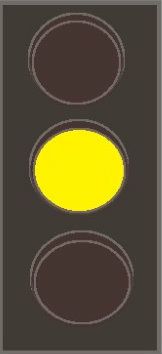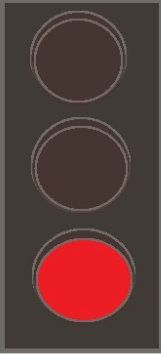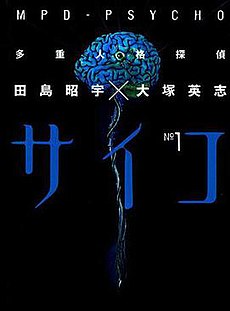SOUL EATER (Soru Ita), by Atsushi Okkubo. First published in 2004, and first published in North America in 2009.
PLOT: In a world where demons, witches, and other malevolent forces can possess and devour the souls of the innocent, the only defense against such forces are the Meisters and their Weapons. The Weapons are a select few who can transform at will into a weapon of choice, while the Meisters are those who can harmonize with the souls of their Weapons and wield them against these dark forces. Both Meisters and Weapons are trained by Death himself, a.k.a. Shinigama-sama, at the Death Weapon Meister Academy. There, the young Meister/Weapon pairs hope to capture enough demon and witch souls to qualify their Weapons to become Death Scythes, weapons worthy of being wielded by Shinigami-sama.
This series follows three sets of Meisters and Weapons. The first are Maka Alburn, daughter of the current Death Scythe, and her Weapon Soul Eater. They manage to nearly achieve Death Scythe status, until a naughty kitty gets in their way. The second pair are Black Star, an obnoxious, egomanicial wanna-be ninja who wields the mult-talented and modest Tsubake. The third are Death the Kid, Shinigami-sama's son, and his Weapons, Patty and Liz Thompson. Death the Kid would be a fine Meister in his own right, except for the fact that he has a crippling OCD-esque obsession with symmetry and exercises it at all the wrong moments. All three storylines start to come together when the kids are sent to fight a zombie who was formerly a teacher himself.
STORY: This is one of those situations where I saw the anime before I read the manga, a situation where normally I have to struggle to not constantly play compare and contrast. The good news is that for Soul Eater, that isn't an issue - the first volume matches up pretty closely with the first four episodes of the anime, and there's good reason for that. This first volume works as a solid introduction to our main cast as well as the universe at large, but it's also slightly hampered by something that the anime wisely avoided - fanservice.
I genuinely like the concept of Soul Eater. The idea of 'kids fighting against supernatural forces ' is not a new one to shonen manga, but Soul Eater gives it a whimsical, Halloween flavored twist with its setting and visual style. There's a nice variety of opponents, ranging from witches to mummies, demonic gangsters to master swordsman. There's also a nice variety in the main cast, thanks to the choice of focusing on three pairs of kids versus just one. All of them could easily carry their own storyline, and all of their introductory chapters do a good job establishing their personalities and skills. Now, how much you like each pair is another matter entirely.
Personally, I couldn't STAND BlackStar, mostly because he is annoying as all hell, and I'm still not sure how much of it is intentional. I suspect he's supposed to be something of a satire on the standard shonen hero (and indeed, many have speculated that he's a pointed satire on a certain popular blond ninja), and if so, it's effective - annoying, but effective. Maka and Soul are probably the most well-adjusted and professional of the lot, and they have not only a solid partnership, but a solid (if sometimes contentious) friendship. Death the Kid and the Thompson sisters are played more for comedy than anything, thanks to the combination of Kid's OCD, Patty's bizarre brand of ditziness, and the heavy amounts of fanservice in their introductory chapter. It doesn't help that their storyline remains removed from the other two, even after the introductory chapters are done and the manga moves into the main plotline. Speaking of that main plotline, like any shonen manga, it all leads to violence, and the fights play out much like you would expect. The conclusion is rather...erm...unexpected (not to mention fanservicely, and a bit distastefully so).
Soul Eater isn't going to revolutionize the world of shonen, but it's a solid entry into the genre with a large varied cast and a unique, spooky setting.
ART: Ohkubo's character designs are just as varied and (to a degree) fantastical as the setting, but they're also a bit strange, and not necessarily in a pleasant way. The faces are weirdly simplified with big, blank, wide-set eyes and ridiculously crude mouths. It conflicts with the rest of the designs, which are more rounded and realistic, and as such never look quite right. Sometimes that strangeness works, such as with the villains or with Shinigami-sama himself, who is almost adorable with his funky zig-zag silhouette and iconic mask.
One thing that really didn't work for me was the fanservice, of which there was a surprising amount. There is quite a lot of panty shots and Barbie-doll nudity on display, and this was one of the few places where I could not avoid comparing the manga with its animated counterpart. I know the story can work without most of it, and you can't help but want to pull the manga aside and say "You know, you don't have to pander to us like this. You have some good ideas here - you don't need to flash some flesh at the readers to keep us interested."
Being a shonen series, of course there is plenty of fighting, and the fighting is well-drawn. The action is not drowned out in speedlines - instead, it is drawn in crisp, clean poses that are laid-out in a way that is easy to follow. The panels are framed at all sorts of off-kilter angles, and even the panels themselves often are purposefully framed crookedly, packed into the pages in a helter-skelter manner until the panels widen out and straighten out for the fights. The backgrounds are often blank, but those that are present are wonderfully eclectic, with the buildings leaning drunkenly into frame and highlighted by a leering, grimacing sun or moon.
Soul Eater's art does have some character of its own in the little details and in the composition, and in most respects is solid and distinct. The only thing that drags it down are the unnecessary levels of fanservice.
PRESENTATION: There are a couple of pages of omake comics about the mangaka, as well as a couple of pages of translation notes.
RATING:
 Soul Eater is a fine introduction to a whimsical take on an old shonen formula. It may be a bit redundant to those who are familiar with the anime, but fans and newbies alike can find something to enjoy.
Soul Eater is a fine introduction to a whimsical take on an old shonen formula. It may be a bit redundant to those who are familiar with the anime, but fans and newbies alike can find something to enjoy. This series was published in the USA by Yen Press. This series is ongoing in Japan, and Yen Press has so far published 10 of 21 available volumes, with more to follow. All 10 volumes are currently in print.
You can purchase this volume and many more like it through RightStuf.com!





